 |
1 |  | 
An alkane with seven carbon atoms in a linear configuration is called a |
|  | A) | hexene |
|  | B) | heptene |
|  | C) | hepylane |
|  | D) | heptane |
|  | E) | hexane |
 |
 |
2 |  | 
Which of the following is not a structural isomer of CH3CH2 COOH? |
|  | A) | CH3CH2COOCH3 |
|  | B) | CH3COOCH3 |
|  | C) | CH3COCH2OH |
|  | D) | HOCH=CHOCH3 |
|  | E) | CH3CH(OH)CHO |
 |
 |
3 |  | 
Which compound listed below is a structural isomer of CH3CH2 COOH and exhibits optical isomerism? |
|  | A) | CH3COOCH3 |
|  | B) | CH3COCH2OH |
|  | C) | HOCH=CHOCH3 |
|  | D) | CH3CH(OH)CHO |
 |
 |
4 |  | 
Tartaric acid, HOOCCHOHCHOHCOOH is a dihydroxycarboxylic acid. How many chiral centers does this compound possess? |
|  | A) | None. |
|  | B) | 1 |
|  | C) | 2 |
|  | D) | 3 |
|  | E) | 4 |
 |
 |
5 |  | 
Which of the following molecules are geometric isomers of each other?
 <a onClick="window.open('/olcweb/cgi/pluginpop.cgi?it=gif:: ::/sites/dl/free/0073656011/17492/ch24quizbq5a.gif','popWin', 'width=564,height=103,resizable,scrollbars');" href="#"><img valign="absmiddle" height="16" width="16" border="0" src="/olcweb/styles/shared/linkicons/image.gif"> (4.0K)</a> <a onClick="window.open('/olcweb/cgi/pluginpop.cgi?it=gif:: ::/sites/dl/free/0073656011/17492/ch24quizbq5a.gif','popWin', 'width=564,height=103,resizable,scrollbars');" href="#"><img valign="absmiddle" height="16" width="16" border="0" src="/olcweb/styles/shared/linkicons/image.gif"> (4.0K)</a> |
|  | A) | I and II |
|  | B) | II and III |
|  | C) | I and III |
|  | D) | None of these compounds exhibit geometric isomerism. |
 |
 |
6 |  | 
Identify the products of the reaction of cyclohexene and bromine shown below.
[Please insert structures from QQ 36 here and in answers below. |
|  | A) | 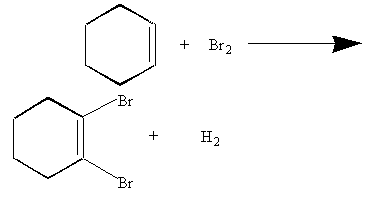 <a onClick="window.open('/olcweb/cgi/pluginpop.cgi?it=gif:: ::/sites/dl/free/0073656011/17492/ch24quizbq6a.gif','popWin', 'width=382,height=214,resizable,scrollbars');" href="#"><img valign="absmiddle" height="16" width="16" border="0" src="/olcweb/styles/shared/linkicons/image.gif"> (1.0K)</a> <a onClick="window.open('/olcweb/cgi/pluginpop.cgi?it=gif:: ::/sites/dl/free/0073656011/17492/ch24quizbq6a.gif','popWin', 'width=382,height=214,resizable,scrollbars');" href="#"><img valign="absmiddle" height="16" width="16" border="0" src="/olcweb/styles/shared/linkicons/image.gif"> (1.0K)</a> |
|  | B) |  <a onClick="window.open('/olcweb/cgi/pluginpop.cgi?it=gif:: ::/sites/dl/free/0073656011/17492/ch24quizbq6b.gif','popWin', 'width=263,height=107,resizable,scrollbars');" href="#"><img valign="absmiddle" height="16" width="16" border="0" src="/olcweb/styles/shared/linkicons/image.gif"> (0.0K)</a> <a onClick="window.open('/olcweb/cgi/pluginpop.cgi?it=gif:: ::/sites/dl/free/0073656011/17492/ch24quizbq6b.gif','popWin', 'width=263,height=107,resizable,scrollbars');" href="#"><img valign="absmiddle" height="16" width="16" border="0" src="/olcweb/styles/shared/linkicons/image.gif"> (0.0K)</a> |
|  | C) | 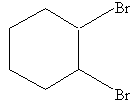 <a onClick="window.open('/olcweb/cgi/pluginpop.cgi?it=gif:: ::/sites/dl/free/0073656011/17492/ch24quizbq6c.gif','popWin', 'width=154,height=121,resizable,scrollbars');" href="#"><img valign="absmiddle" height="16" width="16" border="0" src="/olcweb/styles/shared/linkicons/image.gif"> (0.0K)</a> <a onClick="window.open('/olcweb/cgi/pluginpop.cgi?it=gif:: ::/sites/dl/free/0073656011/17492/ch24quizbq6c.gif','popWin', 'width=154,height=121,resizable,scrollbars');" href="#"><img valign="absmiddle" height="16" width="16" border="0" src="/olcweb/styles/shared/linkicons/image.gif"> (0.0K)</a> |
|  | D) | 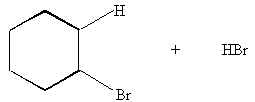 <a onClick="window.open('/olcweb/cgi/pluginpop.cgi?it=gif:: ::/sites/dl/free/0073656011/17492/ch24quizbq6d.gif','popWin', 'width=271,height=118,resizable,scrollbars');" href="#"><img valign="absmiddle" height="16" width="16" border="0" src="/olcweb/styles/shared/linkicons/image.gif"> (0.0K)</a> <a onClick="window.open('/olcweb/cgi/pluginpop.cgi?it=gif:: ::/sites/dl/free/0073656011/17492/ch24quizbq6d.gif','popWin', 'width=271,height=118,resizable,scrollbars');" href="#"><img valign="absmiddle" height="16" width="16" border="0" src="/olcweb/styles/shared/linkicons/image.gif"> (0.0K)</a> |
 |
 |
7 |  | 
Name the following compound. CH3CH2CH2
CH2CH2NH2 |
|  | A) | aminoethane |
|  | B) | pentylamine |
|  | C) | hexylamine |
|  | D) | pentyl amide |
|  | E) | ammonium pentane |
 |
 |
8 |  | 
How many isomers are there that correspond to the formula C4H10 O? |
|  | A) | 3 |
|  | B) | 5 |
|  | C) | 6 |
|  | D) | 7 |
|  | E) | 9 |
 |
 |
9 |  | 
A saponification reaction involves the |
|  | A) | base-catalyzed hydrolysis of an ester. |
|  | B) | formation of an ester from a carboxylic acid and an alcohol. |
|  | C) | dissociation of a carboxylic acid. |
|  | D) | Markovnikov addition of HCl across a carbon-carbon double bond. |
|  | E) | substitution of Br2 on an aromatic ring. |
 |
 |
10 |  | 
Select the correct name for the following compound.
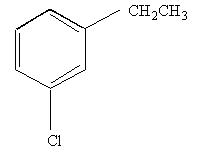 <a onClick="window.open('/olcweb/cgi/pluginpop.cgi?it=gif:: ::/sites/dl/free/0073656011/17492/ch24quizbq7.gif','popWin', 'width=218,height=165,resizable,scrollbars');" href="#"><img valign="absmiddle" height="16" width="16" border="0" src="/olcweb/styles/shared/linkicons/image.gif"> (0.0K)</a> <a onClick="window.open('/olcweb/cgi/pluginpop.cgi?it=gif:: ::/sites/dl/free/0073656011/17492/ch24quizbq7.gif','popWin', 'width=218,height=165,resizable,scrollbars');" href="#"><img valign="absmiddle" height="16" width="16" border="0" src="/olcweb/styles/shared/linkicons/image.gif"> (0.0K)</a> |
|  | A) | m-chloro-ethylcyclohexene |
|  | B) | 1-chloro-5-ethylcyclohexene |
|  | C) | 1-chloro-5-ethylbenzene |
|  | D) | m-chloro-ethylbenzene |
 |


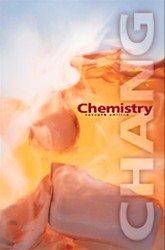
 2002 McGraw-Hill Higher Education
2002 McGraw-Hill Higher Education

 2002 McGraw-Hill Higher Education
2002 McGraw-Hill Higher Education